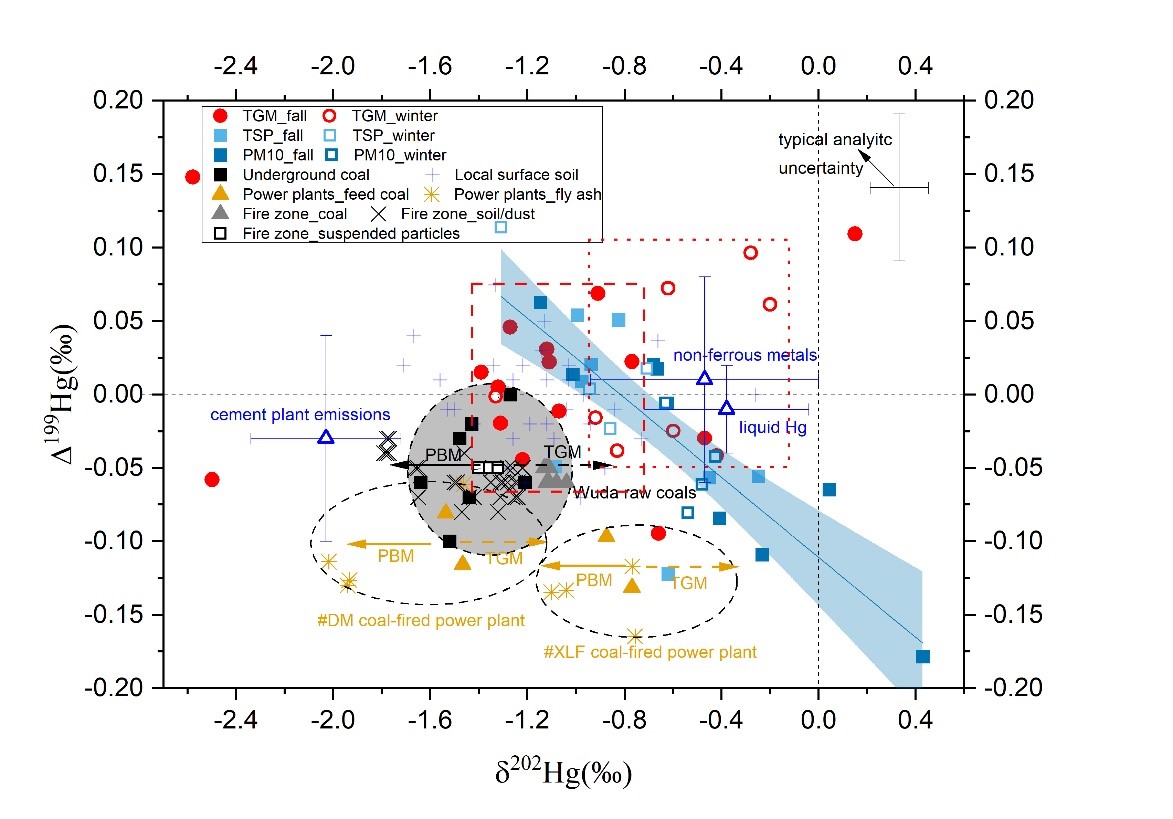SYNOPSIS: Mercury isotope evidence shows that underground coal fires could emit large amounts of Hg into the atmosphere and significantly elevate nearby urban Hg levels.
Pollutant emissions from coal fires have caused serious concerns in major coal-producing countries. The amount of coal burned due to fires is estimated to be up to 200 Mt yr-1 in North China, and numerous coal seams likely continue to burn for decades to even several centuries. Recently, great efforts have been devoted to suppressing them in China, notably at the notorious Wuda Coalfield in Inner Mongolia. Recent surveys revealed that while fires in this coalfield have been nearly extinguished near the surface, they persist underground. However, the impacts of Hg volatilized from underground coal fires remain unclear.
In a recent study led by Prof. Ruoyu Sun, they measured concentrations and isotope compositions of atmospheric Hg in both gaseous and particulate phases at an urban site near the Wuda Coalfield (Figure 1). The atmospheric Hg displayed strong seasonality in terms of both Hg concentrations (5–7-fold higher in fall than in winter) and isotope compositions. Combining characteristic isotope compositions of potential Hg sources and air mass trajectories, they conclude that underground coal fires were still emitting large amounts of Hg into the atmosphere that have been transported to the adjacent urban area in the prevailing downwind direction. The other local anthropogenic Hg emissions were only evident in the urban atmosphere when the arriving air masses did not pass directly through the coalfield.

Figure 1. The plot of δ202Hg vs. Δ199Hg used to appoint sources of TGM and PBM samples collected at the urban Wuda district near the coal fire zone.
Their study shows that Hg isotope variations are quite sensitive to Hg emissions from underground coal fires, which provides a useful and complementary way to monitor the intensity and duration of underground coal fires that are typically detected by traditional methods such as remote sensing, borehole engineering, and the indexed gases. They suggest that the local government routinely performs the low-cost and high-frequency monitoring of wind directions and atmospheric Hg concentrations to gain a first insight into the year-round Hg pollution levels and sources. In case an accurate Hg source tracing is needed, the Hg isotope compositions of atmospheric samples with high Hg levels could be measured to detect the likelihood of underground coal fire outburst.
Article information:
Ruoyu Sun*, Fei Cao , Shifeng Dai, Bing Shan, Cuicui Qi, Zhanjie Xu, Pengfei L, Yi Liu, Wang Zheng, Jiubin Chen*. Atmospheric mercury isotope shifts in response to mercury emissions from underground coal fires. Environ. Sci. Technol. https://pubs.acs.org/doi/full/10.1021/acs.est.2c08637